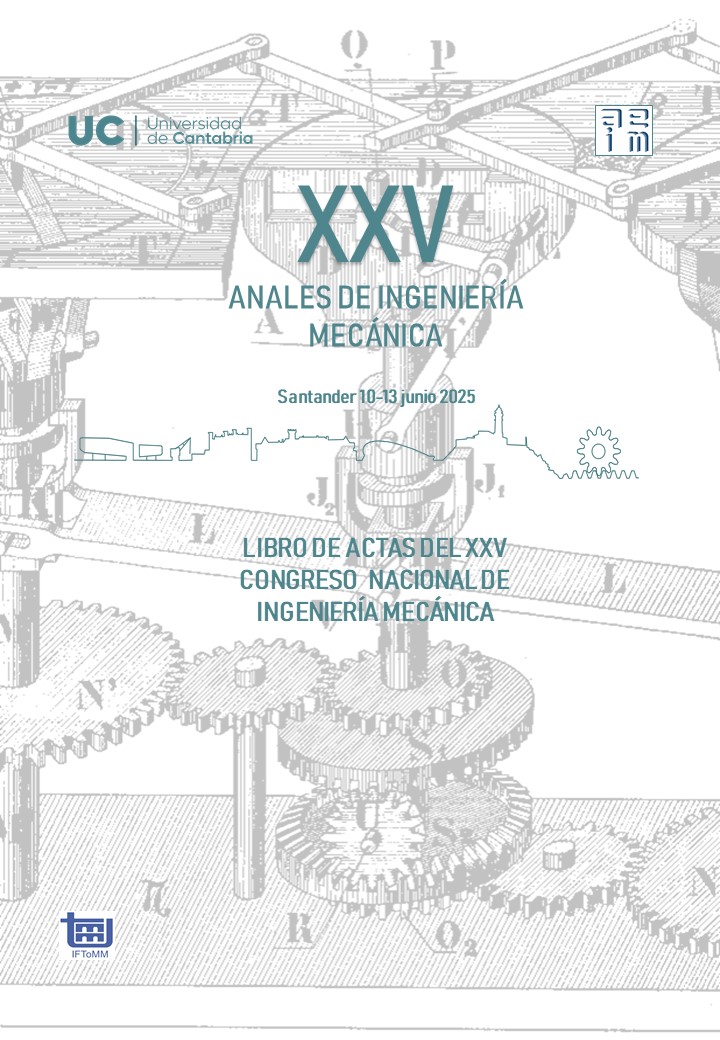Modeling Contact Problems Involving Toroidal Surfaces
Contenido principal del artículo
Resumen
Accurately modeling contact interactions in mechanical systems with complex geometries is a critical step towards predicting the dynamic response of the system. In particular, toroidal surfaces are especially challenging in contact mechanics due to their nontrivial geometry involving both convex and concave surfaces, which often results in complex contact interactions when dealing with planar surfaces or other curved bodies. Such shapes frequently appear in several engineering applications, including tires, seals, and various ring components. Hence, the present study focuses on developing a robust and computationally efficient methodology to simulate the contact dynamics between a toroidal surface and a plane by employing a penalty-based compliant force model. This work not only provides a framework for the standalone modeling of toroidal-plane interactions, but also demonstrates broader applicability to systems with more complex surfaces in which some parts can be approximated by toroidal geometry.
The toroidal surface is represented parametrically, involving a set of two angular parameters: one defining the angle along the torus cross-section and another denoting the rotation around the axis of the torus. The proposed procedure facilitates the precise location of points on the torus geometry and enables the use of efficient contact detection methods. Unlike simpler geometries, such as spheres or ellipsoids, the torus requires specialized techniques to accurately identify the contact points and assess pseudo-penetration during contact scenarios. In order to address these challenges, the torus surface is discretized into multiple slices, each treated as a local cylindrical approximation. This slicing approach simplifies the contact region analysis while preserving the geometric fidelity. The interaction between the torus and the plane is evaluated for each slice, and suitable normal and tangential contact force models are adopted. The normal forces are computed using a Hunt and Crossley-based model, which takes into account the properties of the contacting materials, such as stiffness and damping, while the tangential forces are evaluated with a regularized static friction model.
The methodology developed in the context of this work is applied to the dynamic simulation of a generic toroidal body contacting a fixed plane. The obtained results highlight the system's sensitivity to key parameters, including the stiffness and damping of the contact interface and the number of slices utilized to discretize the torus geometry. While increasing the number of slices improves the system’s accuracy, it also leads to an increase in the computational cost, imposing a trade-off between precision and efficiency. Additionally, the proposed approach has been able to capture the complex variations in contact regions as the torus orientation changes, showcasing its versatility in handling dynamic scenarios. Future work will focus on refining the model, exploring different contact models, and extending its application to more complex multibody systems. In addition, the extension of this work to supertoroidal shapes is intended.
Detalles del artículo

Esta obra está bajo una licencia internacional Creative Commons Atribución-NoComercial-CompartirIgual 4.0.
CC BY-NC-SA 4.0)
El lector puede compartir, copiar y redistribuir el material en cualquier medio o formato, siempre y cuando cumpla con las siguientes condiciones:
-
Atribución (BY): Debe dar crédito adecuado al autor original, proporcionando un enlace a la licencia y señalando si se han realizado cambios.
-
No Comercial (NC): No puede utilizar el material con fines comerciales. Esto significa que no puede venderlo ni obtener ganancias directas de su uso.
-
Compartir Igual (SA): Si adapta, transforma o construye sobre el material, debe distribuir sus contribuciones bajo la misma licencia que el original.
Recuerda que esta licencia no afecta los derechos legales del autor, como el derecho moral o las excepciones de uso justo.

